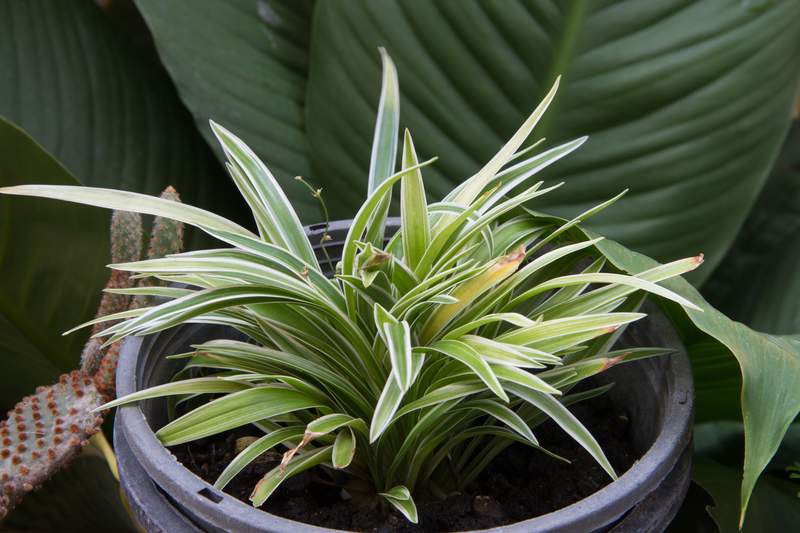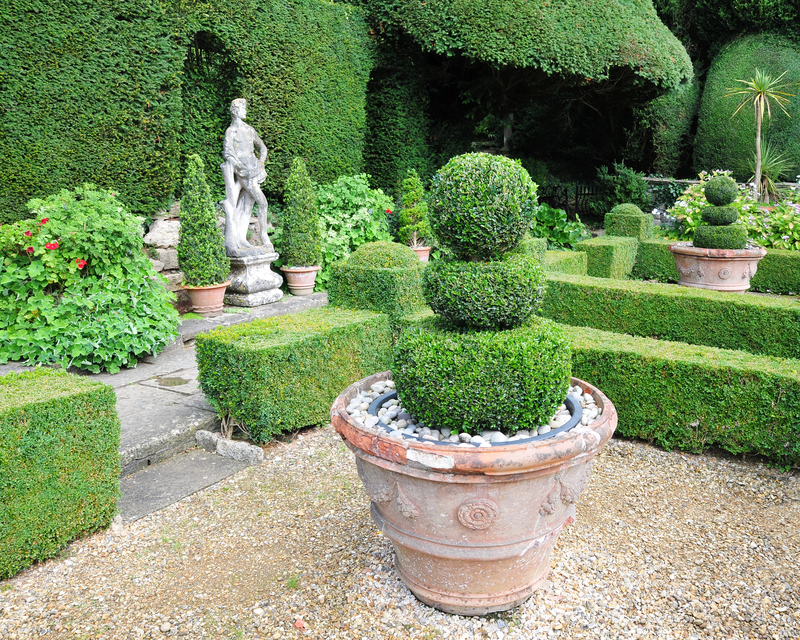Expert Steps to Orchid Maintenance
Posted on 19/09/2025
Expert Steps to Orchid Maintenance: The Comprehensive Guide
Orchids stand as one of the most enchanting and rewarding plants any enthusiast can nurture. While their breathtaking blooms can captivate any audience, orchid maintenance presents unique challenges, especially for beginners. Whether you are new to the world of orchids, or a seasoned grower hoping to refine your skills, this detailed guide covers expert steps to orchid care and maintenance. Our comprehensive approach ensures that your orchids remain healthy, vibrant, and consistently in bloom.

Understanding Orchids: A Brief Overview
Orchids comprise one of the largest and most diverse plant families, with over 25,000 naturally occurring species and more than 100,000 hybrids. Their adaptability to various habitats--from tropical Asia and South America to temperate zones--makes them fascinating houseplants. However, this diversity also demands a keen awareness of each species' requirements for proper orchid care.
Why Orchid Maintenance Is Essential
- Health and longevity: Consistent care protects against pests, diseases, and premature death.
- Bloom encouragement: Proper steps can prompt frequent and vibrant blooming cycles.
- Stress reduction: Appropriate environmental management minimizes stress caused by temperature or humidity changes.
Step 1: Choosing the Right Orchid Species
Selecting an appropriate orchid variety forms the cornerstone of successful orchid growing. Commonly cultivated types include Phalaenopsis (Moth Orchid), Dendrobium, Cattleya, and Oncidium. Each species has unique care requirements, though most thrive indoors with proper attention.
- For beginners: Phalaenopsis is the easiest orchid to maintain, needing moderate sunlight and weekly watering.
- For intermediate growers: Dendrobium requires higher light and regular fertilization.
- For experts: Cattleya and Oncidium demand humidity control and frequent monitoring.
Step 2: Mastering Orchid Potting and Repotting
A crucial aspect of expert orchid maintenance is understanding correct potting and repotting techniques. Orchids prefer well-draining pots and specialized substrate--often a mix of bark, sphagnum moss, and perlite.
Essential Potting Tips
- Choose the right container: Clear pots allow you to monitor root health. Holes at the bottom ensure ample drainage.
- Use specific media: Standard soil suffocates orchid roots. Instead, opt for bark chips, coconut husk, or specialized orchid media.
- Repot every 1-2 years: Replace the old medium when it starts breaking down or when roots outgrow the pot.
- Gently tease roots: During repotting, remove dead roots and tease apart circling ones for better aeration.
Step 3: Orchids' Light Requirements
Light is a vital factor in expert orchid care. While orchids need abundant yet indirect sunlight, direct sun exposure risks burning delicate leaves.
Optimizing Light for Orchids
- East-facing windows: The morning sun is gentle and ideal for most indoor orchids.
- Filtered light: Sheer curtains or blinds can protect orchid leaves during intense afternoons.
- Artificial lighting: Full-spectrum grow lights can supplement low-light environments, especially in winter.
- Signs of light stress: Dark green leaves suggest insufficient light, while yellow or scorched patches indicate excessive sunlight.
Step 4: Watering Your Orchid
Watering stands as a common stumbling block for many growers. Too much water invites root rot, while too little leads to dehydration and stunted growth.
Expert Watering Strategies
- Follow the "soak and dry" method: Water thoroughly until excess escapes from the pot; allow the medium to dry before the next watering.
- Use lukewarm water: Avoid cold or softened water which can damage sensitive roots.
- Reduce watering in winter: Orchid growth slows, so cut back to every 10-14 days.
- Mist roots sparingly: Misting can boost humidity, but avoid excess moisture on flowers and leaves.
Step 5: Humidity and Air Circulation
Many orchid species, especially tropical varieties, flourish in higher humidity (40-70%). Dry household air, especially heated in winter, can stress plants and impede growth.
- Humidifiers and pebble trays: Place orchids on trays filled with water and pebbles to increase local humidity.
- Room ventilation: Gentle air movement wards off fungal and bacterial infections; avoid cold drafts.
- Group plants together: Plant groupings create favorable microclimates that maintain humidity.
Step 6: Feeding and Fertilizing Orchids
Orchid fertilization supports robust growth and repeat blooms. However, over-fertilization can burn roots and hinder flowering.
Applying Orchid Fertilizer
- Use balanced fertilizer: Apply a 20-20-20 fertilizer or specialized orchid feed, diluted to half or quarter strength.
- Feed every 2-4 weeks: Fertilize more frequently during active growth and less during dormancy.
- Flush the medium: Rinse out excess salts every month with pure water to prevent buildup.
- Observe your plant: Leggy growth may indicate too much nitrogen, whereas lack of flowering suggests phosphorus deficiency.
Step 7: Pruning and Grooming Orchids
Routine pruning maintains plant health and enhances appearance. Remove dead blooms, yellowing leaves, and dried flower spikes to conserve the orchid's energy.
Key Pruning Steps
- Sterilize tools: Use alcohol or a flame to disinfect scissors or pruners before each use.
- Remove spent spikes: For Phalaenopsis, trim just above a node to encourage rebloom; for others, cut at the base.
- Clip dead leaves: Remove only fully yellow or brown leaves to avoid stressing the plant.
Step 8: Managing Pests and Diseases
Healthy orchids rarely suffer infestations, but vigilance is key. Avoiding common orchid pests and diseases is integral to long-term orchid maintenance.
- Inspect regularly: Check leaves and roots for signs of mealybugs, aphids, spider mites, or fungal spots.
- Isolate new plants: Quarantine newly acquired orchids for a few weeks before integrating them into your collection.
- Treat promptly: Use neem oil or insecticidal soap for mild infestations; severe cases may require systemic treatment.
- Maintain cleanliness: Remove fallen debris and sterilize pots to prevent the spread of mold and bacteria.
Step 9: Encouraging Orchid Blooming
One of the biggest rewards of proper orchid maintenance is the glorious return of blooms. Some orchids need specific triggers to initiate flowering cycles.
Strategies for Consistent Flowering
- Temperature fluctuation: Phalaenopsis orchids, for example, may need a 10?F nighttime drop for several weeks to induce spikes.
- Light duration: Ensure orchids receive 12-16 hours of light (natural or artificial) daily during bloom season.
- Proper feeding: Increase phosphorus closer to anticipated blooming periods.
- Limit repotting: Only repot after blooming to avoid disrupting the flower cycle.
Step 10: Seasonal Adjustments for Year-Round Orchid Care
Orchids go through active growth and resting phases annually. Understanding these cycles is essential for successful orchid maintenance.
- Spring/Summer: Orchids grow vigorously. Increase watering, feeding, and monitor pests closely.
- Autumn: Some species begin to slow down. Reduce watering and feeding, and begin accommodating night temperature drops.
- Winter: Orchids rest. Keep them warm, limit watering, and maintain humidity; expect fewer blooms.

Troubleshooting Common Orchid Issues
Even expert orchid keepers face challenges. Early identification and quick action preserve plant health.
- Wilted leaves: Usually caused by under- or over-watering. Check root health and adjust accordingly.
- Mold and rot: Improve air circulation and cut away damaged tissue.
- Poor blooming: Evaluate light levels, fertilizer schedules, and temperature swings.
- Pest damage: Address infestations quickly with horticultural oil or recommended chemical treatments.
Conclusion: Achieving Orchid Mastery
The art of expert orchid maintenance is both a science and a passion, requiring ongoing learning and patience. By following these professional steps--from selecting the ideal species and mastering potting, to managing light, water, and nutrition--you'll empower your orchids to thrive. Remember, successful orchid care and maintenance is a journey, not just a set of tasks. With dedication and attention to detail, your orchids can reward you with exquisite blooms and enduring vitality for years to come.
Further Resources
- American Orchid Society: Culture Sheets
- Royal Horticultural Society: Growing Orchids
- Orchid Board Forum
Start your orchid journey today with these expert steps for orchid maintenance and enjoy a flourishing, beautiful collection--from a single windowsill bloom to a stunning indoor garden.

